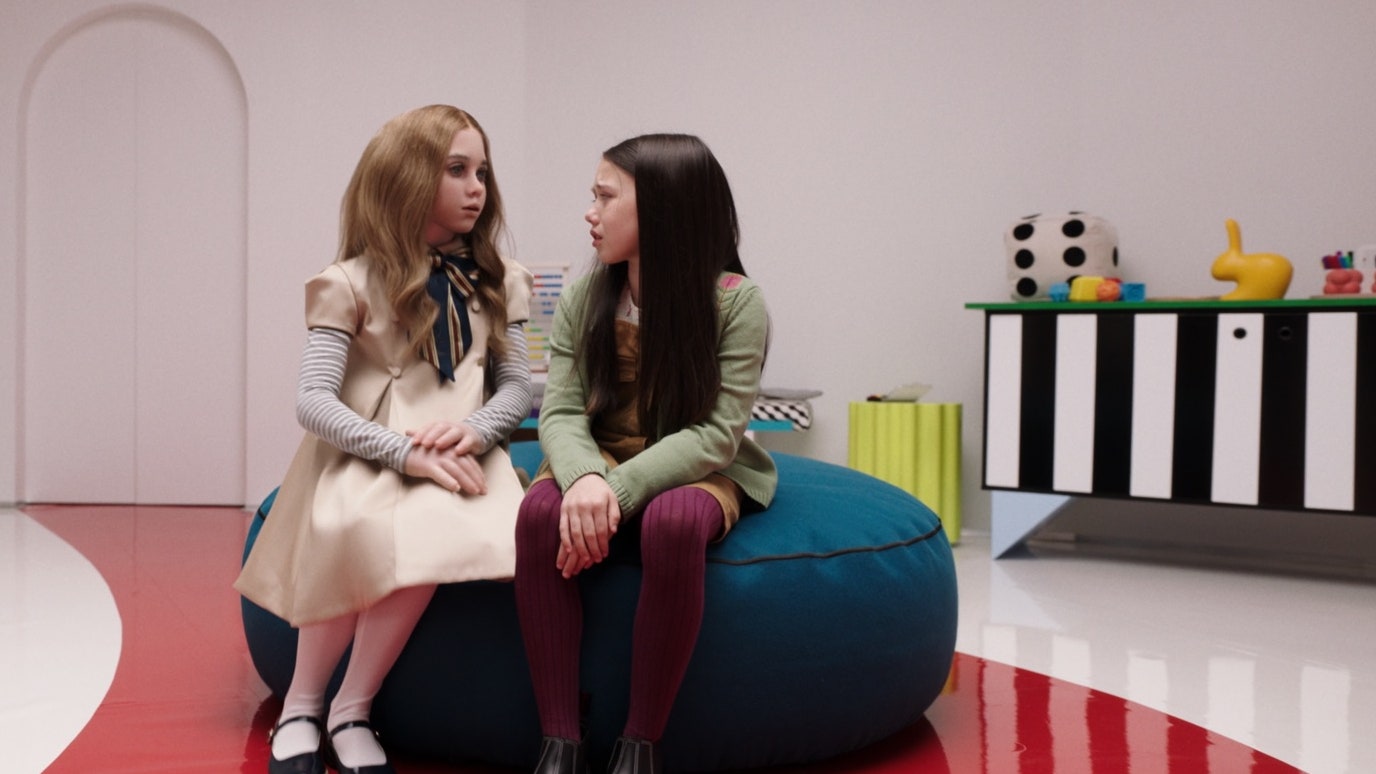Director Gerard Johnstone’s M3GAN has surpassed box office expectations, reenergized our love for Allison Williams, and, for us design lovers, got us reconsidering kindercore. Call it a Memphis design resurgence, call it an extension of Avant Basic, but whatever you call it, the bright-color-imbued and pattern-happy trend has held on tight for the past few years. Even still, it was quite surprising to see the inventive way the style was deployed in the film.
For those who haven’t yet seen it, the movie follows a nine-year-old girl named Cady (Violet McGraw) whose parents die in a car accident while she’s sitting in the backseat, playing with her advanced-Furby-like Purrpetual Pet. She’s sent to live with her aunt Gemma (Allison Williams), a tightly wound toy developer who works at the very company that makes Purrpetual Petz.
Where one might imagine a pity-filled guardian doting on her niece, in her own repressed grief, the best that Gemma can muster is unlimited screentime and a bit of mercy when Cady forgoes a coaster. The midcentury-modern inspired pad they share has some child-friendly artifacts (vintage toys line the open shelving), but those are off-limits until a CPS agent comes to visit and Gemma cracks under the scrutiny, busting one out of its packaging, though that amounts to little more entertainment than a tennis ball.
That is until Gemma creates M3GAN. M3GAN contains the infinite wisdom of her data, the boundless patience of a being with a central mission and no inner life to distract from it. The robot is content repeatedly reminding Cady to flush the toilet, to wash her hands, and to Gemma’s delight, to use a coaster. “Why would you want M3GAN to do all of that stuff?” Gemma’s coworker asks. “If you’re having M3GAN tuck Cady in and read her a bedtime story then when are you ever spending time with her or even talking with her?” But, along with her practical benefits, M3GAN earns Gemma’s desperately needed approval from her boss, so the potential ramifications are not worth considering.

